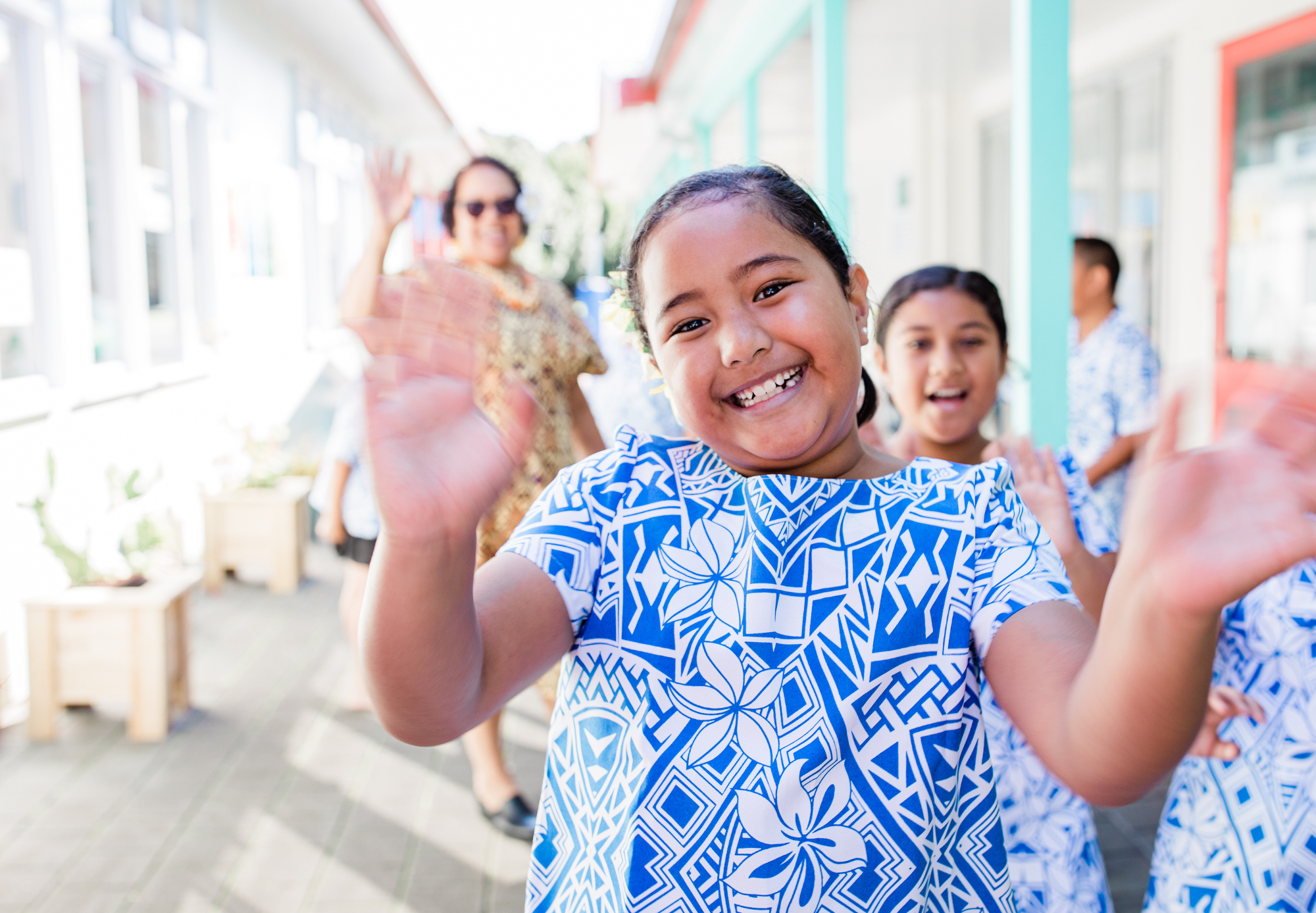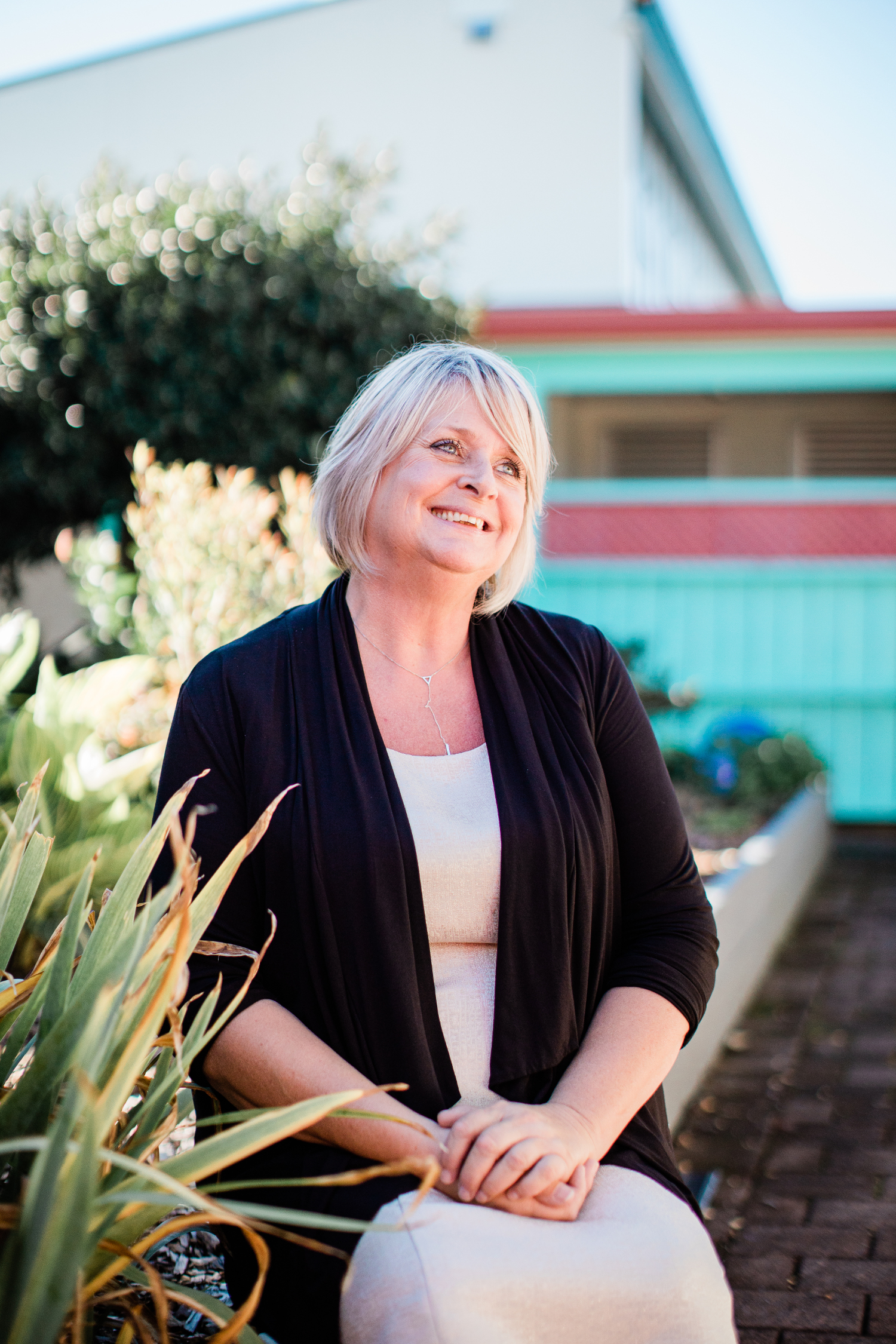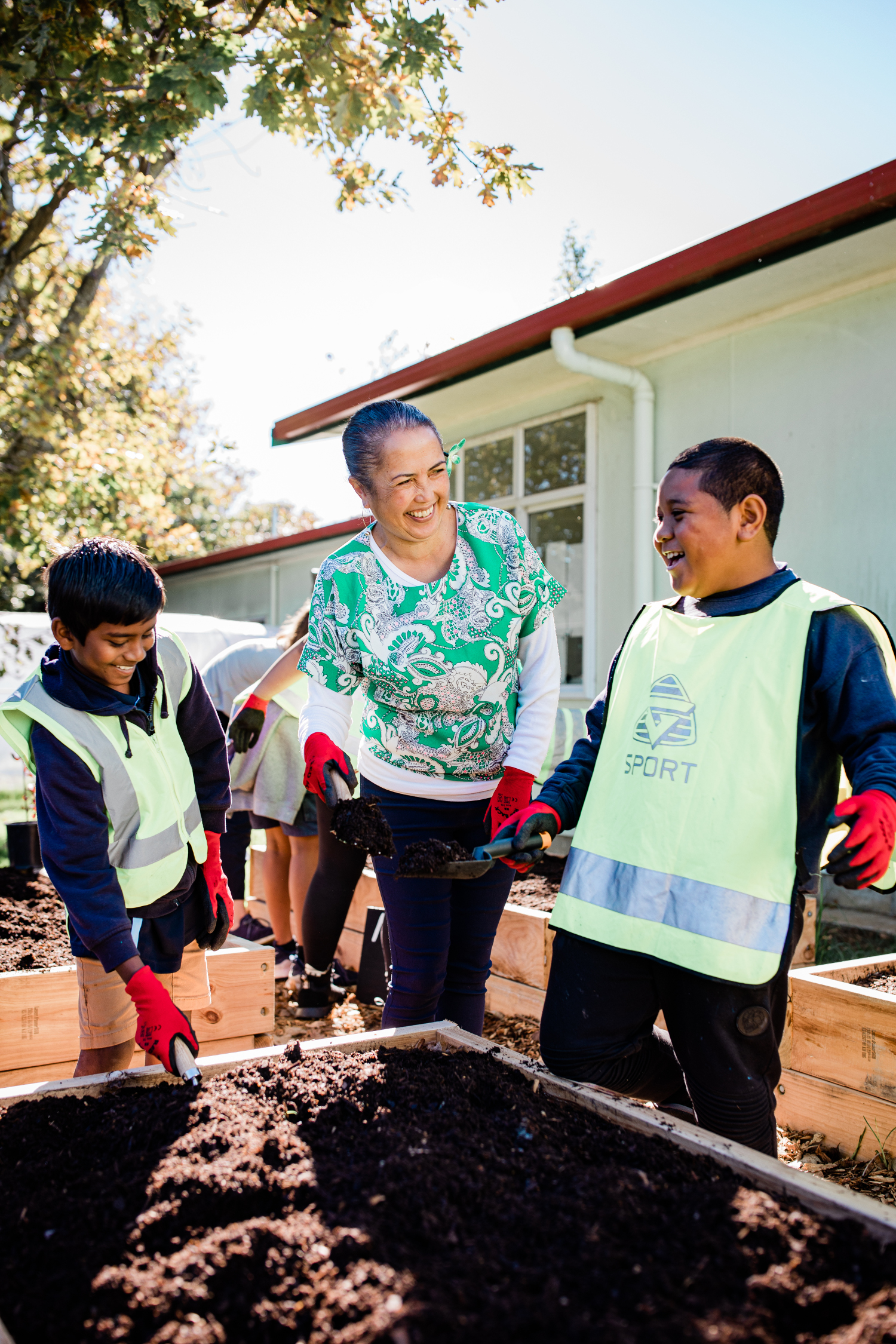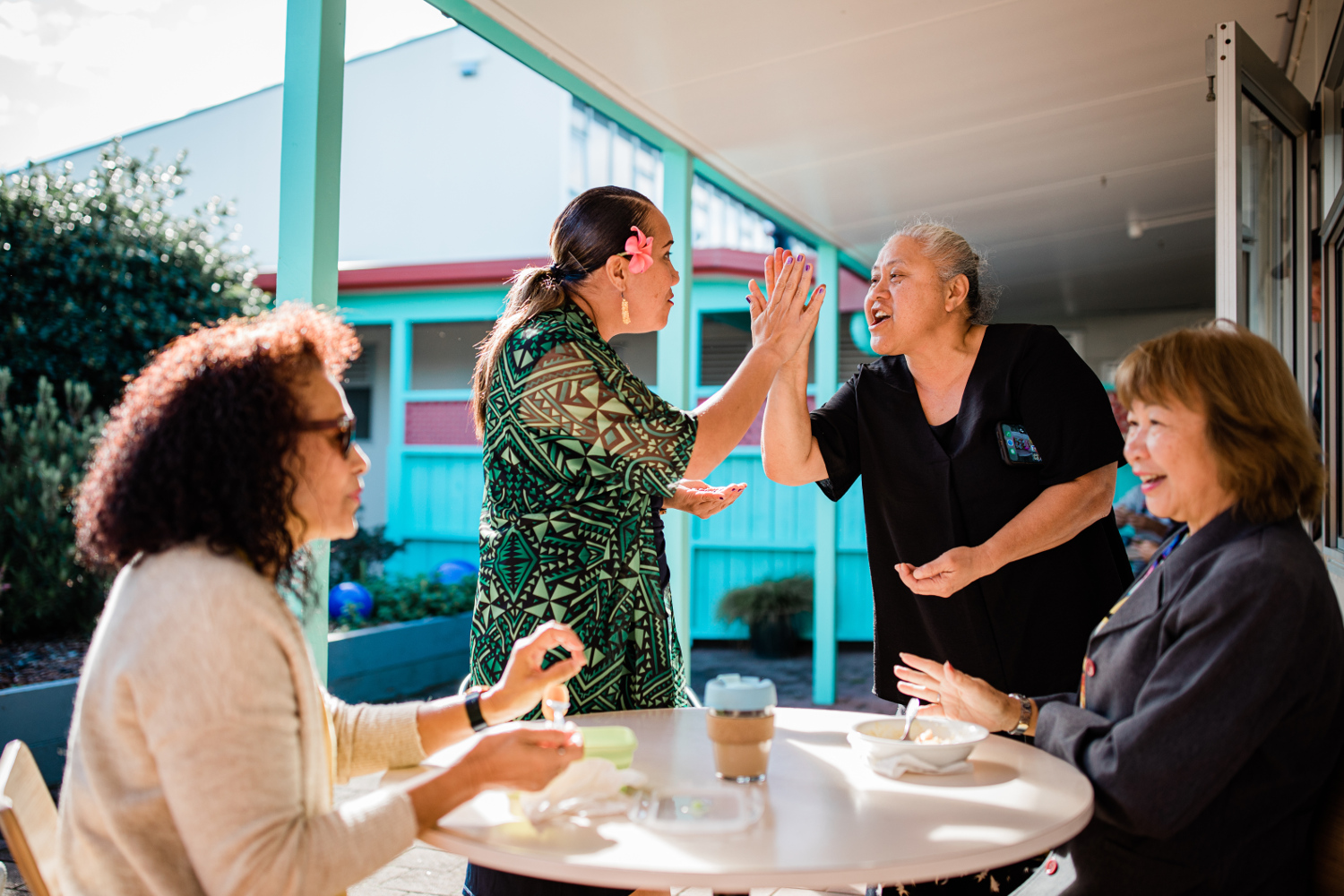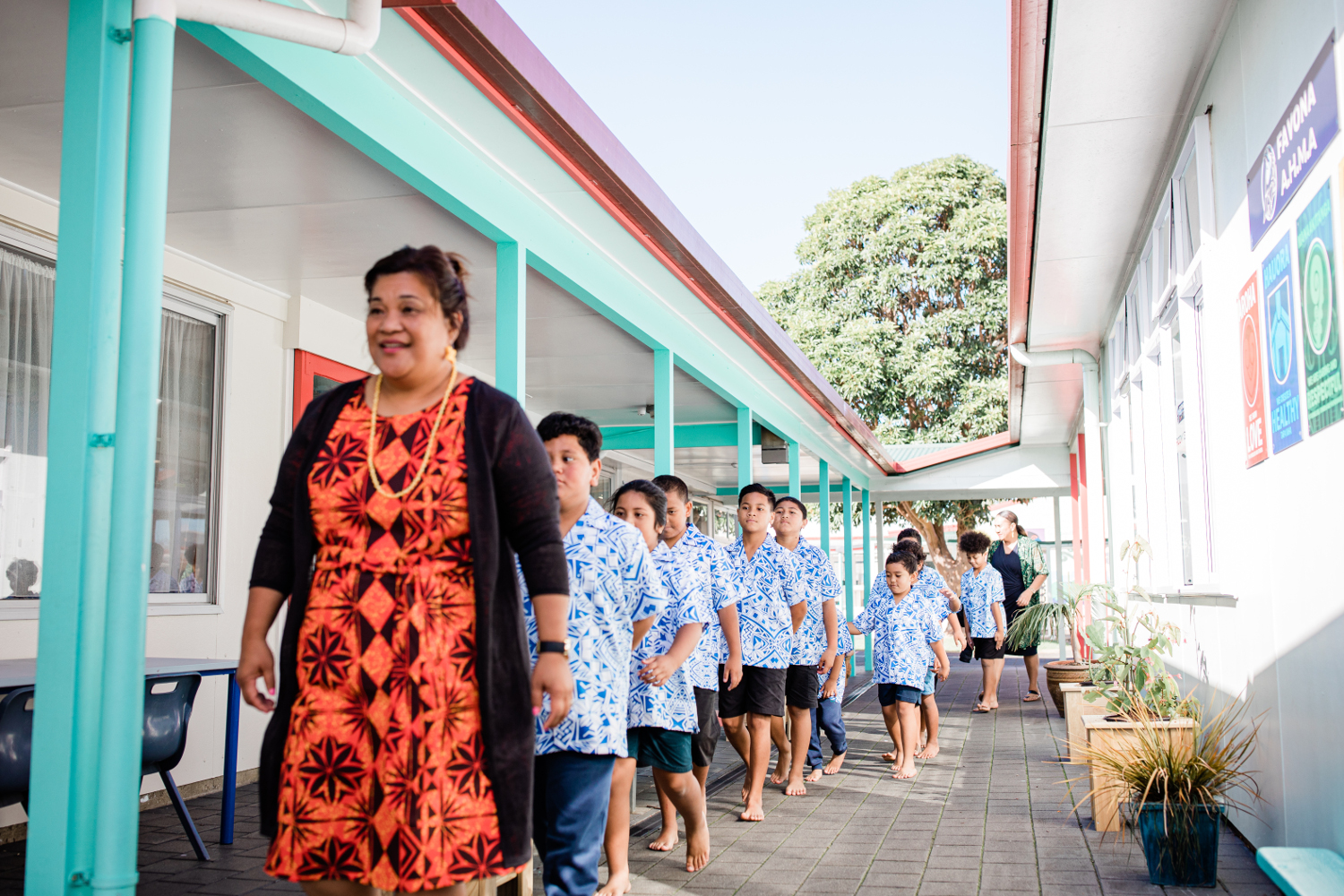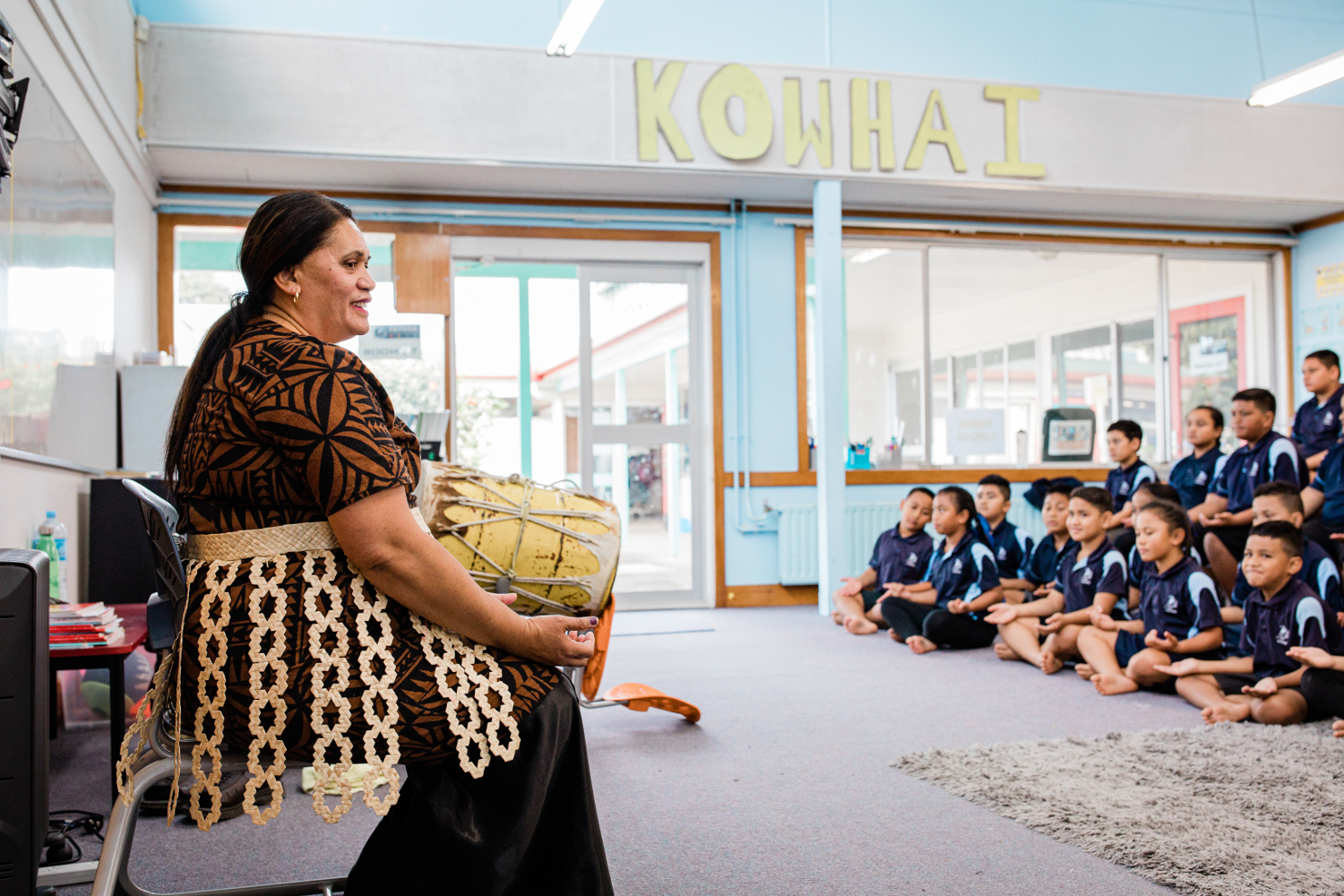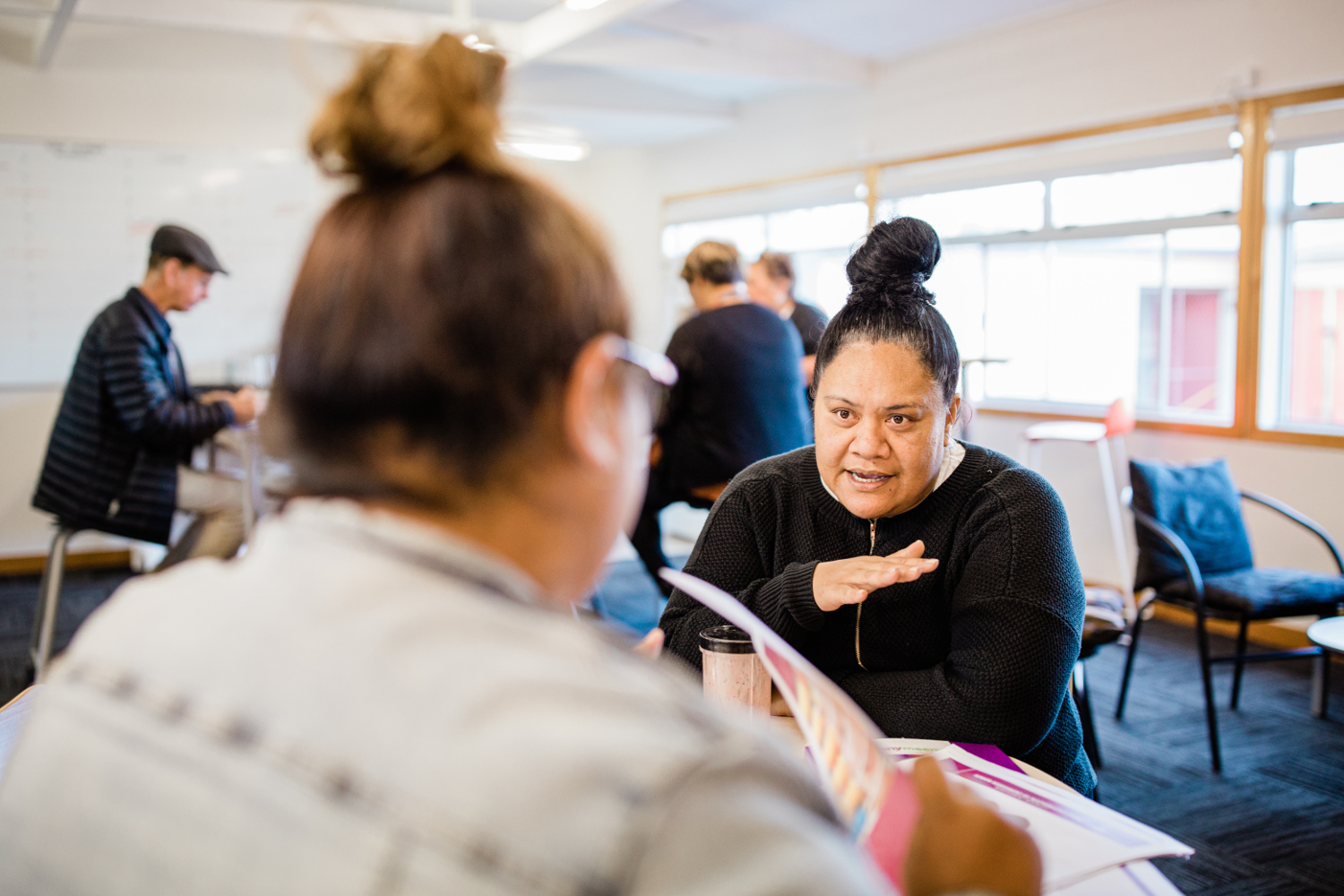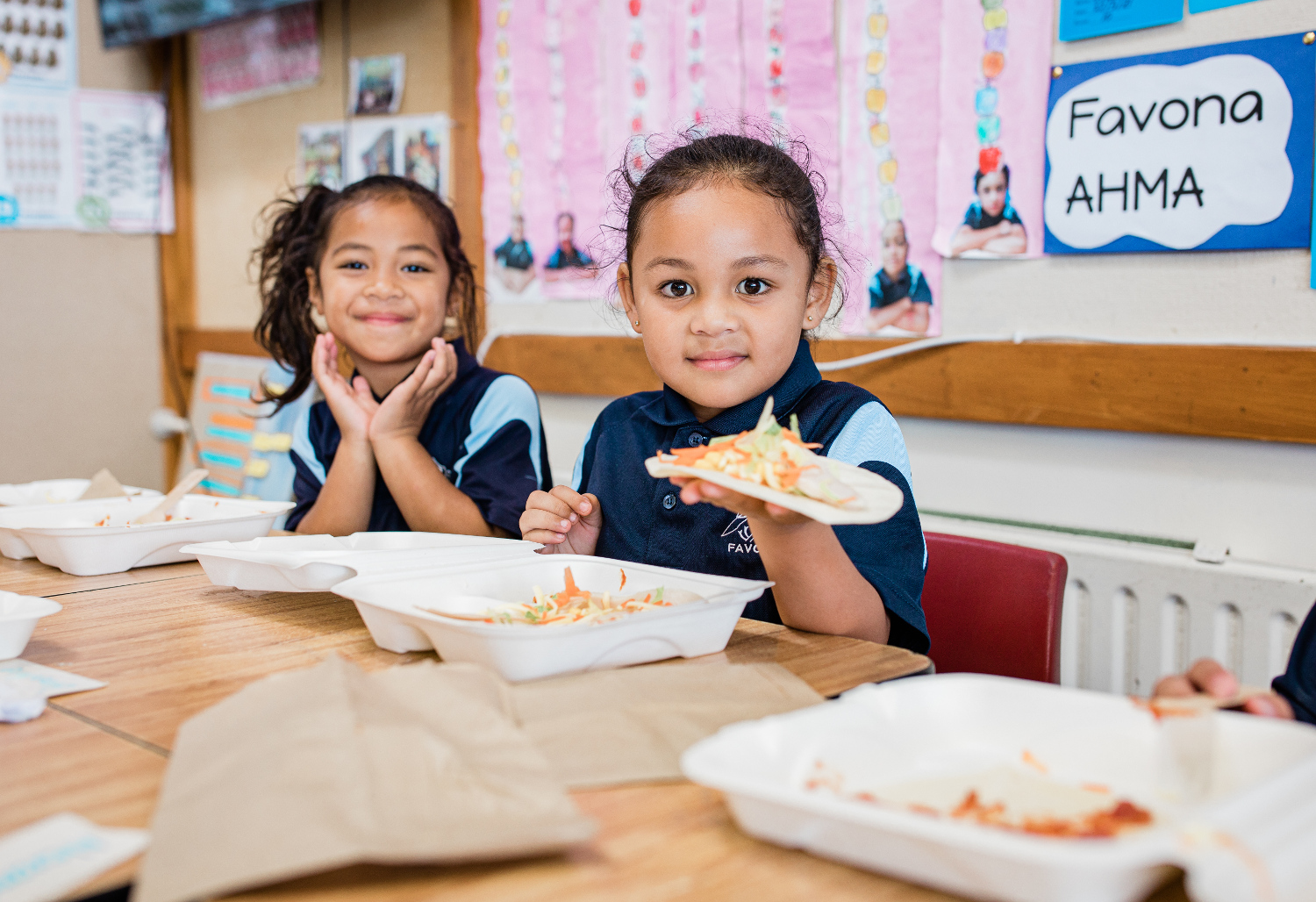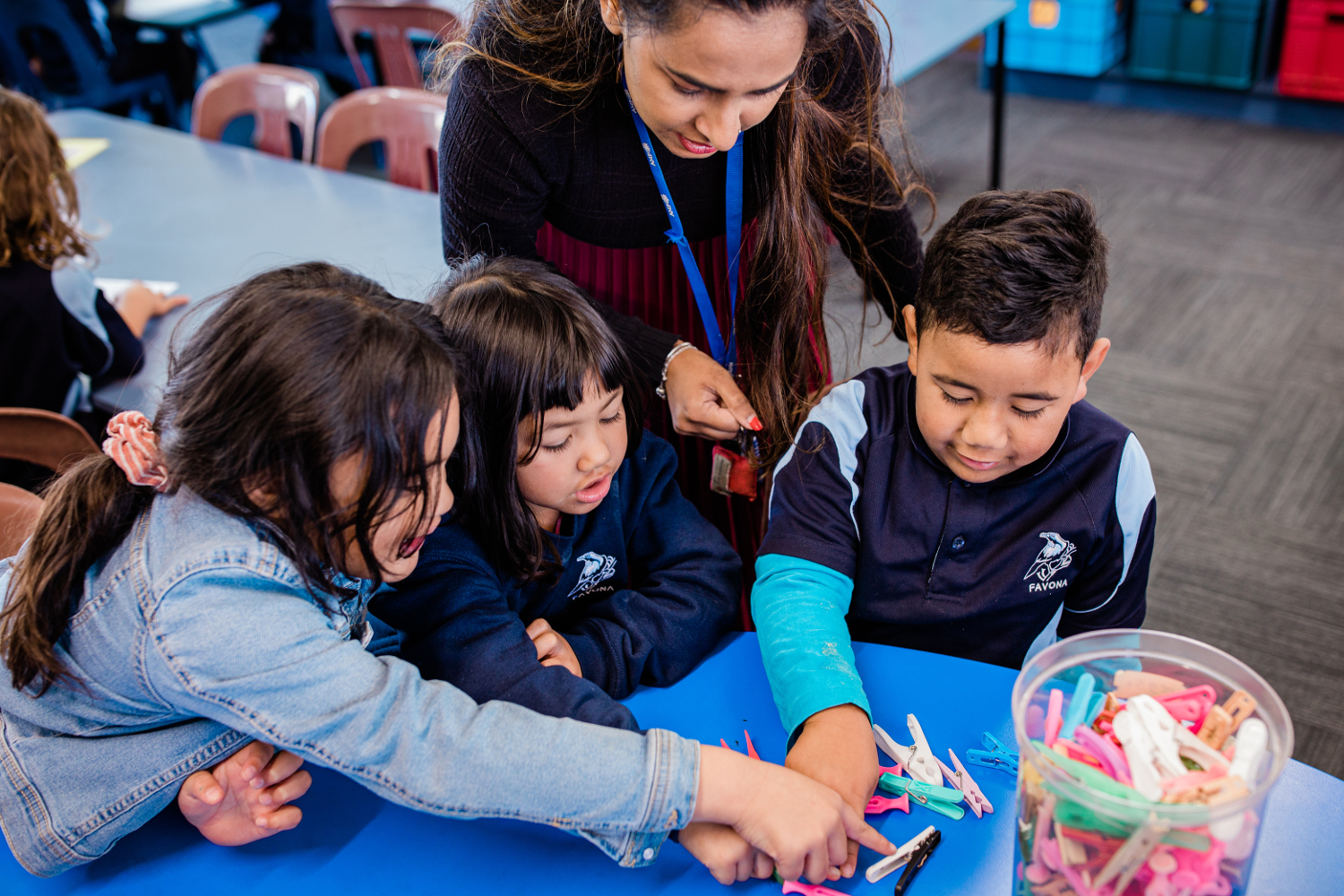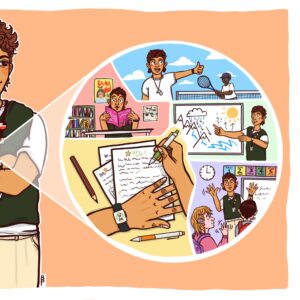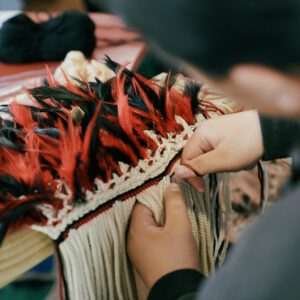“As a school we’ve been through years of grief,” says Mike Anderson.
“We had the earthquakes and the ongoing fallout from that. We were impacted by the Al Noor Mosque massacre, and now we are into the second year of Covid. On top of that we’ve just completed two and a half years of a major rebuild. We’ve been teaching and learning on a construction site.”
The principal of Waimairi School in Christchurch describes how hauora became the central focus for staff and students. Years of disruption piled pressure on teachers, teacher aides and support staff who were already struggling.
“We’d become a staff of high flyers, performing at unsustainable levels,” says Anderson. “We had slipped into a culture where everyone thought they had to be the most amazing teacher in the world. We were just dialling up on everything and while we were achieving amazing things, it was taking a real toll on everyone. When the external events came along we couldn’t continue.”
Recognising that toll, Anderson and his team applied to the Teacher Lead Initiation Fund to research models of hauora; the step began a journey that radically altered the culture of the school.
“We couldn’t ignore what was happening and just let people burn out,” says Anderson. “We had to find ways to refill our tanks.”
While the situation at Waimairi sounds extreme, it is not unusual. There is research aplenty showing that Aotearoa New Zealand educators, across all sectors, have experienced increased levels of stress and burnout for some years.
Since 2016, an annual survey of Aotearoa New Zealand school leaders undertaken by Deakin University (and commissioned by NZEI Te Riu Roa) routinely found high levels of depression, extreme workloads and burnout amongst principals and senior leaders. In 2019, the survey was extended to teachers and became the Teachers’ and Principals’ Health and Wellbeing Survey. Teachers scored worse than their principal colleagues and the general population in nearly all measures. They had higher rates of burnout, sustained levels of cognitive and physical health stress, depressive symptoms and trouble sleeping.
The findings reinforced a 2017 study where a quarter of teachers identified that work was having negative impacts on their mental health, with a fifth reporting negative impacts on physical health. Forty-three percent of those leaving the profession in 2019 cited a lack of work-life balance as the main reason for quitting.
There has been less research into the hauora of educators in early childhood. A 2018 Child Forum survey found significant deterioration in the physical and emotional wellbeing of ECE workers since the previous survey in 2014. Forty-six percent reported experiencing a work-related injury and physical or mental health problems in the previous 12 months. Mental health issues were associated with exhaustion, overwork, bullying and feeling undervalued.
The causes of deteriorating educator hauora are many. Some are a result of demands placed upon schools and centres by a rapidly changing society. Even when those changes are positive, schools are first to feel the impacts of social change, and in recent years the pace has quickened due to our digitally based society.
Increased inequality also tests the resilience and resources of kaiako. A 2018 UNICEF report ranked Aotearoa New Zealand in the bottom third of OECD countries in inequality in education, with poverty playing a significant role. The report reinforced what educators have been saying for some time: that low incomes, poor housing and transience are major obstacles to educational success of tamariki.
At the same time, our schools and centres are places where society’s cultural shifts are negotiated. As educators embrace Te Tiriti o Waitangi and bicuturalism, they also are challenged to meet the needs of new groups of children and their families, as Aotearoa New Zealand’s immigration boom reshapes our communities. In 2018, more than 27 percent of our population were overseas born.
Meanwhile, the numbers of neurodiverse tamariki, and tamariki with disabilities in schools, kura and centres continues to grow. A 2020 IHC survey found that 44 percent of education professionals felt they lacked the skills and resourcing to meet the needs of these children. More students with high behavioural needs add to the pressures on teachers. In 2019, 20 percent of teachers experienced threats of violence from students and 30 percent experienced actual violence.
As educators seek to meet the mounting demands, there is a sense that support for teachers in the community is waning. The TALIS 2018 study found that only one third of teachers felt that the teaching profession is valued in society, a decrease of 12 percentage points from 2014.
Diane Wiechern, who is Principal of Favona School in Māngere, agrees that respect for teachers has lessened in recent years.
“The status of the profession has certainly changed, for whatever reason,” she says. “There’s definitely a feeling that while you are busting a gut to do the best for your students, you are constantly under a critical eye. That can be dispiriting for teachers.”
Wiechern also believes that data-driven teaching, exemplified by the now defunct National Standards, has had a major impact on teacher anxiety. “We have a whole generation of teachers who have known nothing else and have measured their performance against results on paper. In some schools you were only as good a teacher as student gains suggested in the data.”
Wiechern says such environments create anxiety for many teachers and even though National Standards has gone, the culture remains. Meanwhile, Covid-19 has had a profound impact on levels of anxiety and tiredness.
“Our teachers have never worked harder,” says Wiechern. “In our community there’s a lack of devices and connectivity, as well as basic issues around food and shelter. That’s meant our staff have had to put in a huge effort to keep engaged with and support students and families. It’s been made harder because, at any one time, we have had up to ten staff absent because of vulnerabilities in their own families. With the gaps in our circle we have had to find the resilience and strength to pick up the load.”
While those working in schools and centres have long recognised the crisis of educator hauora, the issue has now become a focus for unions and Government.
NZEI Te Riu Roa has established Pūaotanga, an independent review into primary school staffing. It is a response to concerns raised by NZEI Te Riu Roa members that current staffing entitlements do not meet the needs of changing schools.
Alongside this, an accord between the Ministry of Education, NZEI Te Riu Roa and PPTA Te Wehengarua includes an agreement to work on issues around workload. The provision of additional teacher-only days and the removal of the arduous teacher appraisal tool are two early results of the workload discussions.
***
While systemic and resourcing solutions are critical to educator hauora, workplaces have a major role to play as well. Individuals can take responsibility for maximising their own hauora, but there is clear evidence that the best results occur when a school or centre commits to a whole-organisation approach.
University of Auckland researcher Rachel Cann says that the wellbeing of teachers has strong connections to the school’s environment and how supported teachers feel within it. Her interviews of teachers identified three key in-school factors that positively influence wellbeing: feeling valued by colleagues and management; professional development that is meaningful to teachers/meets their needs; and feeling a sense of agency over decisions affecting their work.
Cann believes that leaders who understand the context of individual staff members, and practice the habit of giving positive feedback, build wellbeing in their school.

She says that for educators the workload issue is not just about the amount of work, but the nature of that work. Work that has clear purpose and is fulfilling is quite different from tasks that feel imposed and without tangible reward. The same applies to PLD.
“What individual teachers need varies,” says Cann. “In the same way we differentiate in our classrooms, we need to make sure that support and professional development recognises different teacher priorities.”
“Having agency contributes to educators’ sense of belonging, of feeling listened to and valued”
Agency is critical. “Having agency contributes to educators’ sense of belonging, of feeling listened to and of being valued,” says Cann. “It’s especially important where changes are being implemented, that people feel their opinions matter. They are far more likely to have buy-in.”
The number of schools adopting whole-school and kura approaches to hauora has risen over the past couple of years, with many hiring in expertise from external providers. Others have built their own approaches based around the particular needs of their school communities.
Diane Wiechern doesn’t use the term wellbeing to describe the Favona School approach, although wellbeing is what her whole-school approach creates.
“There’s nothing fancy about what we do,” says the principal of the Māngere school. “It’s just about building caring, authentic, healthy relationships.”
Tailua Keresoma; Favona School tamariki having lunch; Kaiako Elisha Prasad with tamariki in the classroom.
A key to that is the “servant leadership” model operating at Favona. Leaders put the needs of the employees first, helping them to be the best they can. It involves senior leaders checking in on individual staff every day.
“It’s about gauging where people are at; what’s going well and what’s not. It’s finding out what people need and when they need it and letting them know that they are valued. It takes time and has to be consistent and genuine.” Staff are encouraged to be aware of the wellbeing of colleagues, and a teacher-only day at the beginning of the 2021 school year was dedicated to this.
“We talked about what our school community had gone through in the previous year and recognised that there was a lot of unresolved grief,” says Wiechern. “We had all missed out on something, but for some of our colleagues the loss was substantial and is ongoing. We have teachers who haven’t seen partners and other family for 12 months because of border closures. There are others who missed out on attending funerals or weddings.”
Wiechern says that recognising damaged resiliency across the school community has helped build a more supportive environment, which is also exemplified in the management approach to workload.
“Sometimes you’ve got to stop paddling the waka, take a breather and check if everyone is okay. Do we need to slow down or take a different route to reach our goal?”
“In the past year we have thrown out quite a bit of our strategic plan. We’ve asked ourselves whether our people were up for new things and where we decided they weren’t emotionally or spiritually ready to take them on, we have put things on hold. Sometimes you’ve got to stop paddling the waka, take a breather and check if everyone is okay. Do we need to slow down or take a different route to reach our goal?” It would be wrong to think that negativity pervades Favona School. Staff have fun together and work hard. Despite everything, they have enthusiastically pushed ahead over the past year to build new Tongan and Niuean enrichment classes.
“I’m very grateful for how our people have gone above and beyond, even when it has been messy and hard,” says Wiechern. “They’ve continued to keep our students at the centre and make a difference for them.”
***
Waimairi School’s research into teacher hauora has seen them adopt a positive psychology approach. Amongst the first things they did was a baseline survey to measure the psychological capital of teachers, measuring levels of hope, efficacy, resilience and optimism.
“We wanted to see how our staff were doing,” explains Principal Mike Anderson. “If you are running a business with a strong balance sheet and plenty of working capital, you can survive a couple of losses. We needed to know how much psychological capital our people had.”
Staff were grouped based on their scores and a pilot was begun with those holding the most capital. The “Psycap cafe” operated once a week for this group, where participants unpacked how events of the week had affected their reserves and how they planned to replenish them.
“It was a really practical approach,” says Anderson. “Instead of sitting around and unloading about what went wrong we worked on anticipating obstacles and developing strategies to navigate through the hard stuff.”
Over time, all teachers became involved in the “Psycap cafe”, and learned how to better manage their wellbeing.
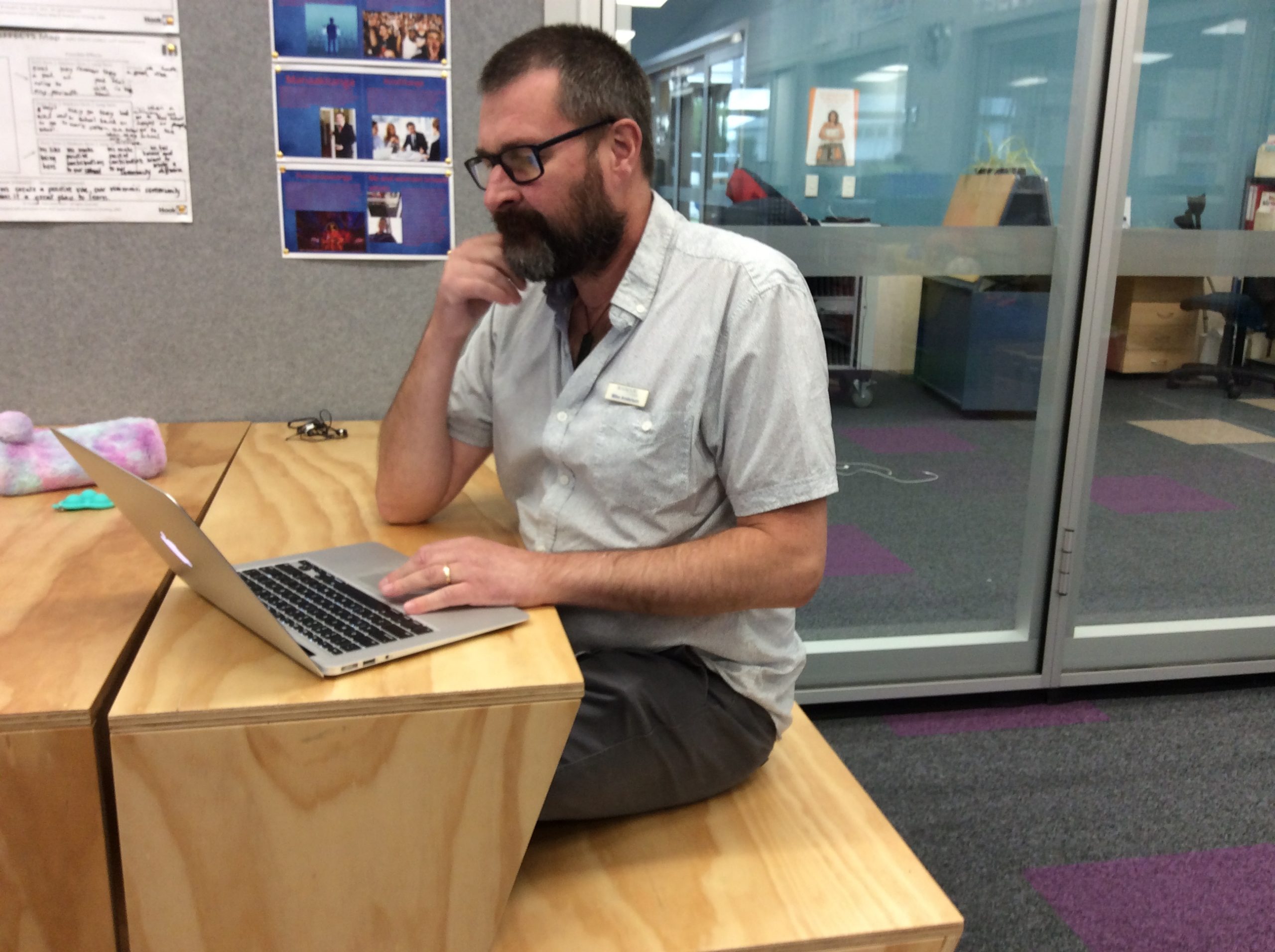
One of the tools they used was Maslach’s Burnout Inventory, through which teachers were able to clearly identify the causes of pressure. For some, emotional exhaustion was a problem.
“It comes from letting the empathy tap run until there is nothing left,” says Anderson. “Some of our people found that they were giving out so much at school that they had nothing to offer when they got home to their families. They realised that they couldn’t be everything to everyone.”
This tendency to overcommit was most obvious in high levels of what Maslach terms “personal accomplishment burnout”.
“That was the key one with our staff,” says Anderson. “People felt they weren’t acheiving to the standards they had set themselves. Actually the standards were unreasonable and they had to change them because it was making them ill.”
“Workload expectations come from the top”
Management has actively encouraged teachers to take pressure off themselves. “Workload expectations come from the top,” says Anderson. “We don’t want our people working after 5.00p.m. or at work over the weekends. We don’t expect them to be endlessly analysing data or setting meaningless targets that take up time.”
Management keeps a ready eye on staff who appear to be struggling with feelings of underachievement. “There’s extensive research that shows what workers value most is recognition of small gains. As a management team we take that seriously and positively reinforce those who we know are struggling with personal accomplishment burnout. We take time to notice small gains and comment on them positively. That has a real impact on wellbeing.”
Mike Anderson says that giving staff the skills and agency to manage their professional wellbeing has changed the school from the stressful place it once was.
“Now we have a caring bunch of people who like coming to work in the morning,” he says. “There’s lots of laughter. Of course we have tough days and we deal with difficult things, but it doesn’t change the tone of the school. Compared with a few years ago we work less hard and there are fewer things done, but we are much more sustainable and we are still doing quality work.”
***

In the South Waikato, Central Kids operates a number of kindergartens and early learning centres. The enhancement of cultural identity is central to their mission and the organisation operates a rautaki ahurea (cultural strategy) to enhance the mana and hauora of its many Māori educators.
“As well as the overarching strategy, each of our six rohe put things in place to meet local needs,” says Sheree Murray, a kaiako at David Henry Kindergarten in Tokoroa. Within Sheree’s Waihou rohe, Māori kaiako come together regularly in a mixture of professional and personal time.
“It is a culturally safe space to be in, where we come together to lean on each other,” says Murray. “We support each other to be authentic and true to who we are as Māori working in a mainstream environment.”
That means valuing the whole person, acknowledging that kaiako are also members of whānau, hapū, iwi and marae and that nurturing their hauora benefits our tamariki and our communities.
“We support each other to be authentic and true to who we are as Māori working in a mainstream environment”
When the group gets together there is kai and kōrero, and a focus such as accessing specialists in different mahi like wairua, rongoā or mauri. Sometimes the group shares stories about how tūpuna care for themselves, or time is spent together in nature connecting with Papatūānuku.
“We also support each other in building competence in te reo Māori. Central Kids’ kōkiri hī (vision) for 2022 includes having conversational Māori occuring at all levels.”
Murray acknowledges that she and her colleagues experience the same workload challenges, tamariki with high needs and teacher shortages that the rest of the sector faces and that the ultimate solutions are outside the control of the workplace. Nevertheless, she and her colleagues seek solutions and ways to negate challenges that may arise.
“It’s about how we, as kaiako, strategise to address the issues that make things difficult. We consider how we can contribute to change and what we can do collectively and individually so that we don’t get to the point of burnout.” Because, in the end, the hauora of kaiako and all education professionals cannot be separated from the hauora of tamariki. By taking care of kaiako, we take care of everyone.
Feature Image: Student Jazmine Hamala and the Niue Enrichment Class at Favona School.
